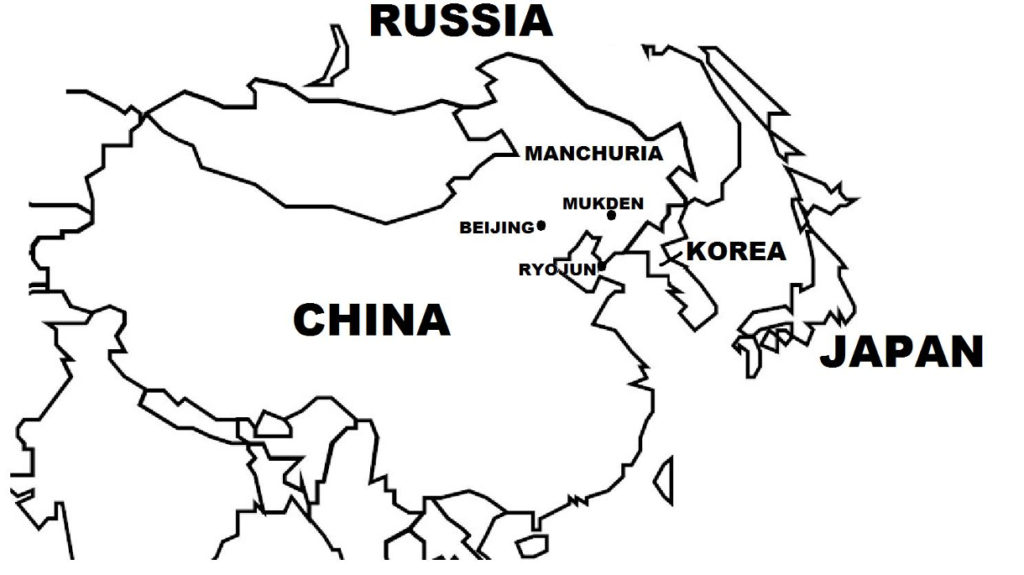On July 7, 1937, the Marco Polo Bridge Incident became the spark for the outbreak of full-scale war between Japan and China. The Marco Polo Bridge (the Western name for the Lugou Bridge) is located southwest of the Chinese capital Beijing. On the evening of that day, Japanese units were conducting military exercises near the bridge when exchange of gunfire occurred between them and the Chinese on the other side of the bridge. Soon after, the Japanese command learned that one of its soldiers was missing (who later returned). A demand to search Wanping for the missing soldier was refused by the Chinese. By early July 8, both sides were bringing in reinforcements to the vicinity of the bridge. Fighting soon broke out. Attempts by both sides to negotiate led to a ceasefire, but ultimately failed to defuse tensions. Full-scale fighting then broke out in the capital and elsewhere, starting the Second Sino-Japanese War on July 8, 1937.
In the period before the Marco Polo Bridge Incident, increasing tensions had already existed between the two countries following the Japanese Invasion of Manchuria in 1931 and further Japanese incursions into northern China.

Prelude The Japanese invaded Manchuria in September 1931, gaining control of the territory by February 1932. While the Manchurian conflict was yet winding down, another crisis erupted in Shanghai in January1932, when five Japanese Buddhist monks were attacked by a Chinese mob. Anti-Japanese riots and demonstrations led the Japanese Army to intervene, sparking full-scale fighting between Chinese and Japanese forces. In March 1932, the Japanese Army gained control of Shanghai, forcing the Chinese forces to withdraw.
(Taken from Japanese Invasion of Manchuria – Wars of the 20th Century: Vol. 5)
With the League of Nations providing no more than a rebuke of Japan’s aggression, Nationalist leader Chiang Kai-shek saw that his efforts to force international pressure to restrain Japan had failed. In January 1933, to secure Manchukuo, a combined Japanese-Manchukuo force invaded Jehol Province, and by March, had pushed the Chinese Army south of the Great Wall into Hebei Province.
Unable to confront Japan militarily and also beset by many internal political troubles, Chiang was compelled to accept the loss of Manchuria and Jehol Province. In March 1933, Chinese and Japanese representatives met to negotiate a peace treaty. In May, the two sides signed the Tanggu Truce (in Tanggu, Tianjin), officially ending the war, which provided the following stipulation that was wholly favorable to Japan: a 100-km demilitarized zone was established south of the Great Wall extending from Beijing to Tianjin, where Chinese forces were barred from entering, but where Japanese planes and ground units were allowed to patrol.
In the immediate aftermath of Japan’s conquest of Manchuria, many anti-Japanese partisan groups, called “volunteer armies”, sprung up all across Manchuria. At its peak in 1932, this resistance movement had some 300,000 fighters who engaged in guerilla warfare attacking Japanese patrols and isolated outposts, and carrying out sabotage actions against Manchukuo infrastructures. Japanese-Manchukuo forces launched a series of “anti-bandit” pacification campaigns that gradually reduced rebel strength over the course of a decade. By the late 1930s, Manchukuo was deemed nearly pacified, with the remaining by now small guerilla bands fleeing into Chinese-controlled territories or into Siberia.
The conquest of Manchuria formed only one part of Japan’s “North China Buffer State Strategy”, a broad program aimed at establishing Japanese sphere of influence all across northern China. In 1933, in China’s Chahar Province (Figure 32) where a separatist movement was forming among the ethnic Mongolians, Japanese military authorities succeeded in winning over many Mongolian nationalists by promising them military and financial support for secession. Then in June 1935, when four Japanese soldiers who had entered Changpei district (in Chahar Province) were arrested and detained (but eventually released) by the Chinese Army, Japan issued a strong diplomatic protest against China. Negotiations between the two sides followed, leading to the signing of the Chin-Doihara Agreement on June 27, 1935, where China agreed to end its political, administrative, and military control over much of Chahar Province. In August 1935, Mongolian nationalists, led by Prince Demchugdongrub, forged closer ties with Japan. In December, with Japanese support, Demchugdongrub’s forces captured northern Chahar, expelling the remaining Chinese forces from the province.
In May 1936, the “Mongol Military Government” was formed in Chahar under Japanese sponsorship, with Demchugdongrub as its leader. The new government then signed a mutual assistance pact with Japan. Demchugdongrub soon launched two offensives (in August and November 1936) to take neighboring Suiyuan Province, but his forces were repelled by a pro-Kuomintang warlord ally of Chiang. However, another offensive in 1937 captured the province. With this victory, in September 1939, the Mengjiang United Autonomous Government was formed, still nominally under Chinese sovereignty but wholly under Japanese control, which consisted of the provinces of Chahar, Suiyuan, and northern Shanxi.
Elsewhere, by 1935, the Japanese Army wanted to bring Hebei Province under its control, as despite the Tanggu Truce, skirmishes continued to occur in the demilitarized zone located south of the Great Wall. Then in May 1935, when two pro-Japanese heads of a local news agency were assassinated, Japanese authorities presented the Hebei provincial government with a list of demands, accompanied with a show of military force as a warning, if the demands were not met. In June 1935, the He-Umezu Agreement was signed, where China ended its political, administrative, and military control of Hebei Province. Hebei then came under the sphere of influence of Japan, which then set up a pro-Japanese provincial government.
China’s long period of acquiescence and appeasement ended in December 1936 when Chiang’s Nationalist government and Mao Zedong’s Communist Party of China forged a united front to fight the Japanese Army. Full-scale war between China and Japan began eight months later, in July 1937.
